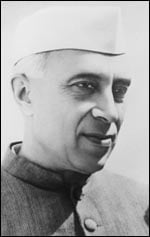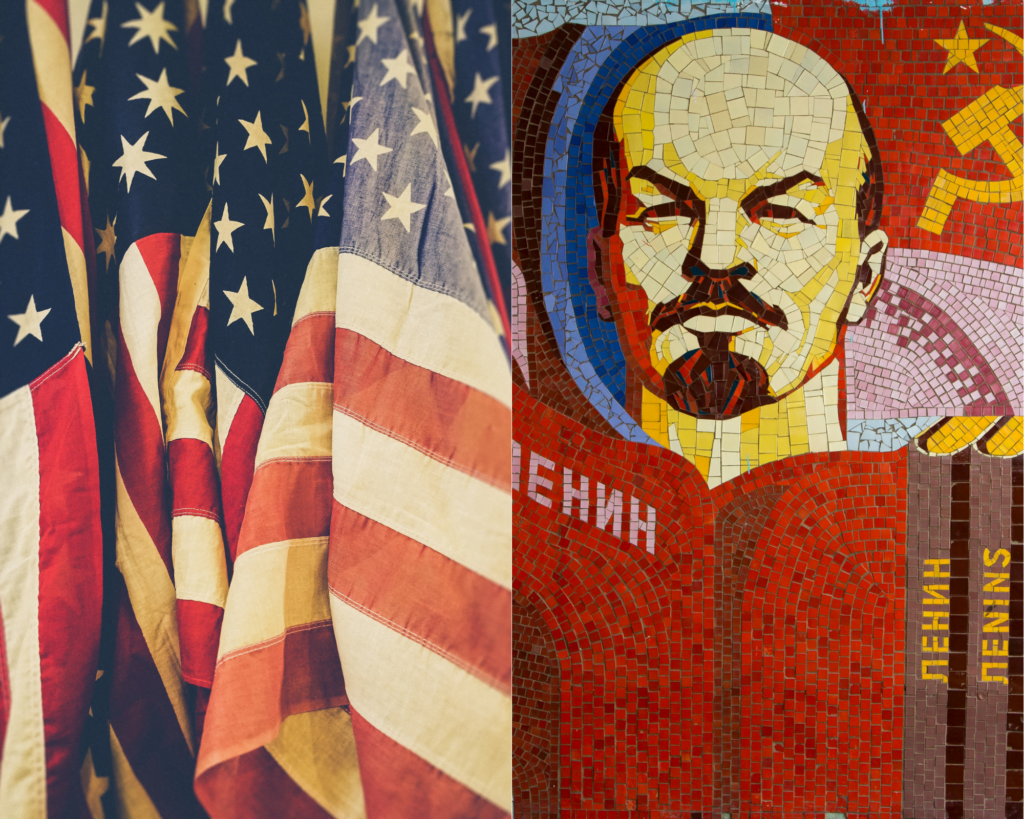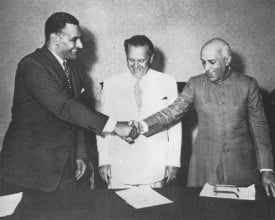Under colonial oppression, there was an absence of an independent foreign policy of India. Framing of a foreign policy for India was the sole prerogative of the British Parliament and carried out by the Viceroy of India. These foreign policies were solely aligned with the British national interests without any regard for Indians. However, things change post-independence.
Undergoing decolonization, through the Gandhian path of ahimsa, i.e. nonviolence involving various vital leaders such as Pandit Nehru, Lal Bahadur Shashtri, and many more. According to J. Lal Nehru, it was our realization of democratic government and its values that allowed us to create a free nation and not merely a satellite nation of another.

Under Nehru’s vision and the struggle of the Indian National Congress, India achieved its freedom, establishing its first council of ministers in the Parliament. Jawahar Lal Nehru became the first prime minister of India and it was his observation that foreign policies are not just empty struggles on a chessboard.
Foreign policies of a nation are the result of multiple aspects such as economic policy, political maturity, social system, etc. and in that sense, India was still in the nascent stage.
Furthermore, the changing nature of world dynamics, the increasing globalization, and interdependence among nations stress the need for maintaining healthy and diplomatic relations with all the other countries. Finding its ground. India’s first foreign policy under Nehru’s prime ministership, which is discussed as follows :

Picture Credits@ Naveed Ahmed.
Foreign policy during the Jawaharlal Nehru period:
Undoubtedly, the entire foreign policy was fabricated under the leadership and handwork of Nehru. He laid the foundation of India’s foreign policy, and he was the only prime minister serving dual roles, i.e. of prime minister and his own foreign minister.
Nehru’s ideas reflect India’s foreign policy both before and after independence and he is often seen as an architect, philosopher, engineer, and voice of India. He was a man of principles and never tried to dictate any of his policies. He was very dogmatic in his approach to international affairs.

Copyright reserved@ Wikipedia Commons
“His vision was a happy amalgam of western liberalism, marxism and Gandhism.” When India became independent, the cold war was going on in the world. Nehru clearly understood the dependence on soviet and American policy on the degree of cooperation or conflict between them.
BR Nanda
He clearly knows the implication of two great powers in the post-second world war era, i.e. USSR and the USA. Nehru had been an ardent advocate of Afro Asian unity, which laid the ground for a united front of afro-Asian countries in the Bandung conference 1955 and the declaration of Panscheel.
NAM and the Nehruvian regime
According to Nehru, realism can be a regressive doctrine in international politics, therefore as a pragmatic idealist, combining idealism with the national interest Nehru laid the foundation of Panchsheel.
As the architect of India’s foreign policy J.L Nehru reconciled high-minded idealism with hard-headed realism. Balancing short and long-term policies into a more stable equilibrium according to his knowledge of history, culture, geography, and diversity of subcontinent.

This policy has vindicated both the Marxist theory of bipolar international class conflict and the Western balance of power approach. India’s foreign policy which is still relevant in changing world scenarios is a result of his far-sightedness.
As a result, India enjoyed a prestigious influence out of all the proportions in his period. Nehru was the founder of the Non-aligned movement, which is another basis of India’s foreign policy.
He wanted to stay away from the Cold War’s alliance system prevalent. However, this doesn’t mean neutrality or isolationism. On the contrary, India actively took part in world affairs and often balanced one superpower against another.
Furthermore, directing India’s foreign policy against the pillars of racism, imperialism, and colonialism. India was the first country to raise its voice against the apartheid system in the UN. The core faith in a peaceful settlement of international disputes is another keystone of India’s foreign policy.
This principle is also reflected in Directive Principles of state policy (DPSP) Article 51. Nehru also played a crucial role in ending the conflict between North Korea and South Korea, Palestine border disputes, and other problems, thus giving Indian foreign policy a global perspective.

Read more about India’s contribution to the war on the Korean peninsula here.
Indian foreign policy after Liberalization:
India started the path of Liberalization with its economic reforms in 1991, shifting from a socialist economy to a liberal economy. This had significant implications on India’s foreign policy because the government removed trade barriers and welcomed the entry of foreign countries to sell their products in India.
India strengthened its relations with all the south-east and western countries, i.e. with all the major powers. However, foreign policy after 2014 changed the foreign policy to a point where it left the traditional approach and built ties with the countries that were not assertive in the past.
India’s foreign policy under the NDA government:
The visit of Modi to India’s neighbouring country Bhutan establishes the fact that India will now focus on building deeper relations with neighbouring countries before reaching out to further allies. Hence, the current NDA government changed the traditional “Look East policy” to “Act East policy” in the 12th ASEAN summit in 2014.

Read more about Australia and ASEAN nations: Fear of nuclear proliferation here
India’s foreign policy observed a shift from a non-aligned approach and started maintaining closer ties with the US actively more after the 2019 elections.
This was also seen during the Modi-Trump Indo US visit. The mega-events hosted by the government are evidence of the priority of the United States in India’s foreign policy. Coming to Japan, the relation between the two-nation reached a greater height under the Modi administration.
New Delhi and Tokyo engaged in the economy, trade, security, and defence cooperation. Moreover, both countries look at each other as essential players in the Indo-pacific region, which will help counter the power imbalance created by China.

Realigning India’s relation
There is also a shift in the approach of diplomatic relations with Pakistan, India conducted a surgical strike on Pakistan in 2016 to respond to the attack in Kashmir. India asked Pakistan to take accountability for terrorist attacks. India also boycotted Pakistan in regional forums on the economic and trade front, evident after cancelling the SAARC summit in 2016.

India also shifted the focus from SAARC to BIMSTEC, a union of 5 countries from South Asia and 2 from Southeast Asia. India also established new defence relations with Israel due to national security threats and constant attacks on Kashmir, growing closer with Pakistan and China. India tried to build closer ties with Israel. Both the ministries visited each other’s countries in 2017 and 2018.
India is one of the biggest arms importers to Israel. Israel is also the biggest exporter of arms to India. India also extended its military spheres apprehending fears of CATSAA from the US back to strengthening its relationship with Russia. Apart from this, India and Israel also deal in pharmaceuticals, IT, agriculture, and tourism.

Picture Credits@ Taylor Brandon
Foreign policy in coming years :
The coming of the second term of the NDA government in 2019 changed the dynamics of India’s foreign policy. Our new Foreign Secretary S. Jaishankar’s appointment led to the proactive shift in foreign policy. As a result, India and ASEAN are becoming the most significant trading countries.
The service sector also contributes to the development of both spheres. India is also taking essential steps in reducing trade deficits with partner countries.

Picture Credits@ Christian Lue
However, due to the adoption of the protectionist policy, the relations between India and US are straining. Therefore in this second phase, India is keen on developing strong ties with other countries especially, the EU.
Changing foreign policy with COVID
Covid-19 has led to economic distress and draining India’s financial resources. India’s unemployment rate is increasing.
On the other hand, GDP is going down. Therefore, post covid foreign policy is likely to hold an operation. Another devastating turn is China’s and India’s relation due to china’s hegemony in the region and attack on Galwan valley.

Picture Credit@ Daniel Schludi
So concluding, India needs to focus more on rebuilding the SAARC forum, which will bring all the south-east countries together and bring stability in the region. Moreover, new Delhi must focus on ” regional multilateralism”, which promotes mutual assistance and joint effort on health emergencies such as vaccination drive, etc. So, every pandemic opens up a gate for new opportunities and changes.
About the Author:
Tanya Jain

Tanya and optimism go well with each other !! She is a shopaholic and loves to get on new trends. Besides this, Tanya has been a political science student and has a great interest in international affairs. Currently pursuing a master in the same from Delhi University, she is determined and hardworking. Tanya aims to make a space for herself and make contributions by interning with “The International Prism”, which acts as a podium to voice the concerns of the youth.







Very well penned…so informative ❤️🤝🏻
Worth reading!
Awesome 👍
Well written and informative.
Summing up India’s foreign policy in an article must have been a big challenge. Those were the best 8 minutes I spent reading sth in a long time.
Please keep writing such articles.
Thanks!
Very opinionated and well written 👍👍
[…] Read the engaging article on Indian foreign policy in a globalizing world here! […]